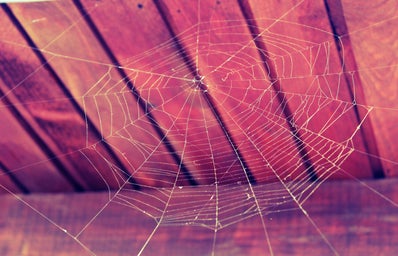During a conversation about Halloween with my English mother, I was surprised when she said that after first moving to the States, she had been astounded at the spirit (pun intended) with which us Americans celebrate All Hallows’ Eve. Apparently you don’t usually see houses dripping with fake cobwebs or front lawns strewn with life-size interactive skeletons in England. This may be changing, though; the BBC noted that in 2010, British supermarket chain Waitrose sold an absurd 676% more large pumpkins than the year before, so it looks like Brits have been upping their spooky game in recent years. But this conversation with my mom got me thinking: how do other countries outside the US celebrate Halloween? After doing some research, I found out some extremely interesting variations of the holiday from all over the globe. Here’s a few of the most intriguing.
China
The holiday in China that most closely resembles our Halloween is the Hungry Ghost Festival. In the lunar calendar, it falls on the 15th day of the seventh month, which is in July or August of the Western calendar. The seventh month is also referred to as the Ghost Month; it is said that on the first day (the 15th), ghosts of ancestors are released from the underworld to freely roam the earth, and may not have the best of intentions for the living. The various practices that take place during the Hungry Ghost Festival are intended to appease the spirits. Some of the practices include burning fake money, offering food for the ghosts, putting up paper lanterns, and organizing festive ceremonies. It is believed that the gates of the underworld are closed on the last day of the month, when you may hear Taoist monks chanting to drive the ghosts away or see families floating paper lanterns down rivers to guide the spirits home.
Mexico
The Day of the Dead, or Dia de los Muertos, is celebrated throughout Latin America and Spain in the first days of November, but is most strongly associated with its country of origin – Mexico. The holiday combines Aztec ritual with Catholicism in a vibrant celebration that honors the deceased with food and drink, parties, and other lively activities that the dead enjoyed during life. Colorful skulls (calaveras) and skeletons (calacas) embellished with elaborate patterns and clothes are popular decorations.
Dia de los Muertos is intended to welcome the spirits as a part of the living community and celebrate their lives, rather than mourn their deaths in sadness. Death is viewed as simply a natural continuance of the human experience, and not as something to be feared.
Germany and Austria
Some regions of Germany and Austria celebrate All Souls’ Week from October 30th to November 8th. One practice associated with this week is putting away your kitchen knives at night to make sure they don’t hurt returning spirits (or that the spirits don’t use them to hurt you). In Austria, some families honor dead relatives by turning on a light and leaving them bread and water. All Saints’ Day, which falls on November 1st and is observed by many Catholics in both countries, is often celebrated by decorating graveyards with flowers and candles to honor the dead.
Ireland
Halloween itself has its origins in the Celtic festival of Samhain, which took place on October 31st and commemorated harvest time. It was also believed to mark the day that the souls of the dead would revisit the realm of the living. Today, one of the biggest Halloween parties in the world takes place in Derry in Northern Ireland. More than 30,000 people gather at this festival each year in full costume to enjoy the skeletal marching bands, ghost walks, free concerts, and spectacular firework displays.
Another Irish Halloween tradition is the making of Barmbrack, a sweet fruit bread which usually contains a special item with a specific significance – for example, a penny means you will be rich, a piece of cloth means you will be poor, and a ring means you will soon be married. Some families also sprinkle holy water on their houses and cover up mirrors to keep evil spirits at bay.


